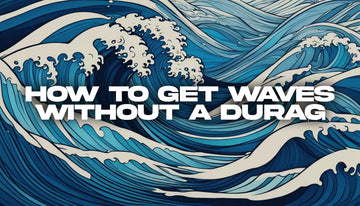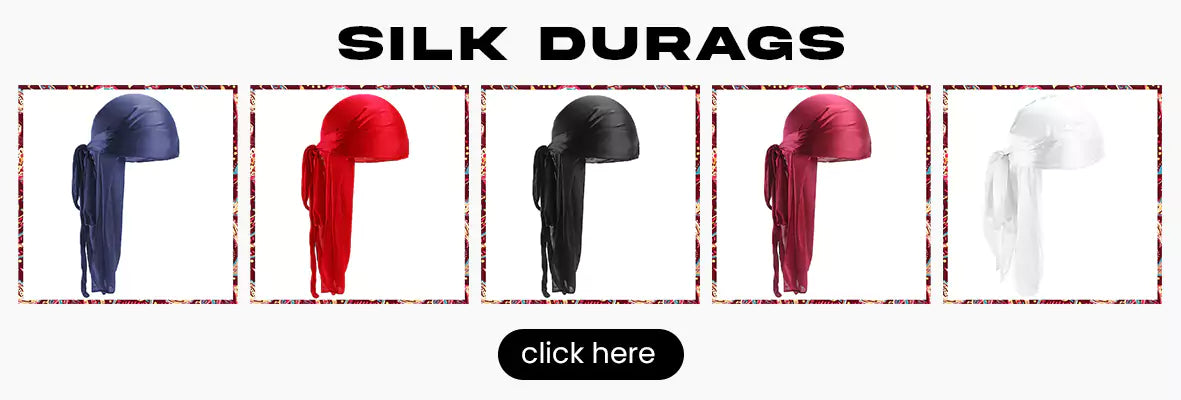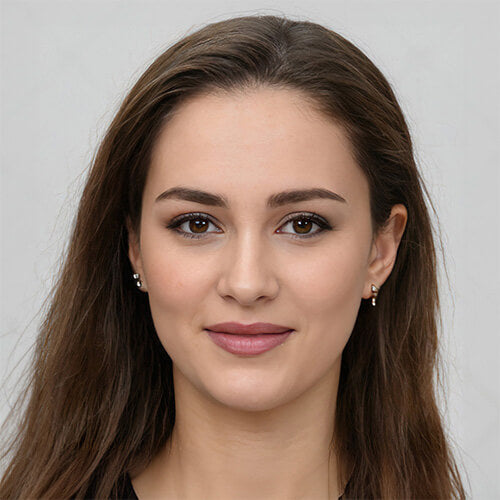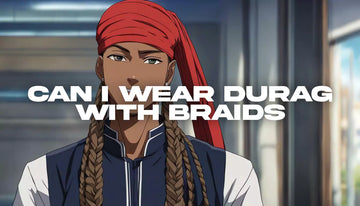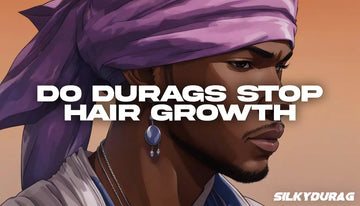Are you tired of wearing a durag to achieve 360 waves? It's time to ditch the durag and embrace the freedom of having waves without it. With the right techniques and practices, you can get those coveted 360 waves without a durag. This ultimate guide will give you all the information you need to achieve and maintain your waves.
Key Takeaways
- It is possible to get 360 waves without a durag.
- The key to getting waves without using a durag is using the right techniques and products.
- Brushing regularly, using the right products, and maintaining your hair are all crucial for achieving and keeping your waves.
Understanding Your Hair Type and Texture
To achieve 360 waves without a durag, it is important to understand your type of hair and texture. Hair type refers to the natural shape of the hair strand, and texture refers to the thickness and coarseness of the hair. Different hair types and textures require different techniques to achieve waves.
There are four main hair types: straight, wavy, curly, and coily. Straight hair is the most common and has a naturally smooth and shiny appearance. Wavy hair has a slight “S” shape and can range from loose waves to tight ones. Curly hair spirals in a corkscrew pattern, while coily hair is tightly coiled and often called “kinky”.
When determining your hair texture, it’s important to consider the diameter of each hair strand. Coarse hair has a thicker diameter and feels rough, while fine hair has a smaller diameter and feels silky. The combination of hair type and texture can greatly affect how your hair will form waves.
Once you’ve determined your hair type and texture, you can tailor your wave-forming routine to suit your needs. For example, those with coarse hair may need a heavier pomade to maintain their waves, while those with curly hair may need to brush their hair more frequently to train it to form waves.
Remember that everyone’s hair is unique, so it may take trial and error to find the right techniques and products for your hair type and texture. Keep experimenting until you find what works best for you.

Understanding Your Hair Type and Texture: Key Points
- There are four main hair types: straight, wavy, curly, and coily.
- Each haircut type requires different techniques to achieve waves.
- Texture refers to the thickness and coarseness of the hair.
- Coarse hair may need a heavier pomade to maintain waves, while curly hair may need more frequent brushing to train it to form waves.
How to Get Waves Without a Durag?
Before you start working on getting 360 waves, it's important to prepare your hair. This involves washing your hair with the right shampoo and conditioner, drying it properly, and protecting it with a towel.
| Step | Action |
|---|---|
| 1. | Choose a shampoo and conditioner that is designed for your hair type. This will help keep your hair clean and healthy, with its natural oils intact. |
| 2. | Wash your hair thoroughly, making sure to massage the roots and scalp. This will help stimulate hair follicles and promote hair growth. |
| 3. | Rinse your hair with cool water to help close the cuticles and prevent frizz. |
| 4. | Dry your hair with a soft towel, being careful not to rub it vigorously against your hair. Instead, gently pat your hair dry to avoid causing damage. |
| 5. | Wrap a towel around your head to help absorb excess water and protect your hair while it dries. This will also help prevent frizz and maintain moisture. |
By preparing your hair properly, you'll create a healthy foundation for your 360 waves journey. Remember to take care of your hair every day to ensure optimal results.
Brushing Techniques for Wave Formation
If you want to get 360 waves without a durag, brushing is crucial to train your hair to form a wave pattern. Brushing helps to distribute the natural oils in your hair and shape it into waves. Here are some brushing techniques to help you achieve optimal wave formation:
- Brush your hair regularly: To get waves, you need to brush your hair at least twice a day. Brushing your hair regularly helps to train your hair to form waves.
- Use a brush: A bristle brush is ideal for maintaining waves as it helps distribute natural oils and smooth the hair cuticle.
- Use a wave brush: A wave brush has longer bristles and is specifically designed for creating wave patterns. It's essential to use the correct brush to achieve the best results.
- Create a spiral motion: When brushing your hair, use a spiral motion to help form the wave pattern. Brush your hair toward the wave you want to create, and use a circular motion to accentuate the wave pattern.
Remember to start brushing from the crown of your head and work your way outwards in all directions. Take your time and brush your hair gently to avoid causing any damage or pulling out hair. With the right brushing techniques, you'll be on your way to getting 360 waves without durags in no time!
Adding Products for Moisture and Hold
While brushing is essential to creating 360 waves, adding products to your hair can also help achieve the desired look. One of the best products for wave formation is pomade, which helps to moisturize your hair and provide hold for the waves.
When choosing a pomade, look for one specifically designed for locks. Wave pomades are formulated to help enhance pattern formation, and they often contain ingredients like coconut oil and shea butter to provide additional moisture and nourishment for your hair.
| Step | Instructions |
|---|---|
| Step 1 | Start with clean, damp hair. Use a wave shampoo and conditioner to help enhance wave formation and provide a good base for the pomade. |
| Step 2 | Scoop a small amount of pomade onto your finger and rub it between your palms to warm it up. |
| Step 3 | Apply the pomade to your hair, focusing on the areas where you want to get wave formation. Be sure to distribute the product evenly throughout your hair. |
| Step 4 | Use a wave brush to brush your hair toward the waves. This will help distribute the pomade and enhance lock formation. |
Remember, a little bit of pomade goes a long way, so start with a small amount and add more as needed. And be sure to avoid using too much, as this can cause your hair to look greasy and weighed down.

Maintaining Your Waves
Congratulations on achieving your 360 waves! Now that you have them, it's important to maintain the wave pattern.
The key to keeping your waves is brushing your hair regularly. Continue to brush your hair in the same pattern as when you were training your hair to form waves.
Remember to take care of your hair everyday by moisturizing it with wave pomade and wearing a durag or wave cap at night. Keeping your hair moisturized will help prevent breakage and keep your waves looking sharp.
With a little effort, you can maintain your waves and keep your hair looking great. Keep brushing, moisturizing, and protecting your hair, and you'll be sure to impress with your sleek and stylish waves.
Conclusion
Congratulations on reaching the end of this ultimate guide to getting 360s waves without using a durag. As you can see, it can make your hair wave even without a durag. By using the right products and techniques, you can achieve the perfect wave pattern.
Now that you know the basics of the process, it's time to start putting these tips into practice. Use a wave shampoo to make your hair more conducive to waves. Don't forget to brush your hair regularly to maintain the wave pattern and prevent it from disappearing.
With patience and persistence, you can achieve the hairstyle you've always wanted. So, what are you waiting for? Start your lock journey today!
FAQ
Q: Is it possible to get 360 waves without a durag?
A: Yes, it is possible to achieve 360 waves without a durag. By following the right techniques and practices, you can train your hair to form waves naturally.
Q: How do I determine my hair type and texture?
A: Determining your hair type and texture is important in getting 360 waves. You can do this by observing the curl pattern, thickness, and texture of your hair. There are also online resources that can help you identify your specific hair type.
Q: What steps should I take to prepare my hair for waves?
A: To prepare your hair for waves, it is important to choose the right shampoo and conditioner that will promote healthy hair growth. You should also wash your hair regularly and dry it gently with a towel. Protecting your hair by wrapping it with a towel after washing is also beneficial.
Q: What brushing techniques should I use to form waves?
A: Brushing your hair regularly is key to training it to form waves. Using a bristle brush or a wave brush can help create the desired pattern. It is important to brush your hair in a spiral motion to encourage wave formation.
Q: Should I use any products to moisturize and hold my waves?
A: Yes, products like pomade can help moisturize your hair and provide hold for the waves. Apply pomade sparingly and evenly throughout your hair for best results. Wave pomades are specifically formulated to enhance wave formation.
Q: How do I maintain my waves once I've achieved them?
A: To maintain your waves, continue brushing your hair regularly and taking care of it daily. This includes protecting it while sleeping, avoiding excessive heat styling, and moisturizing your hair to keep it healthy.

